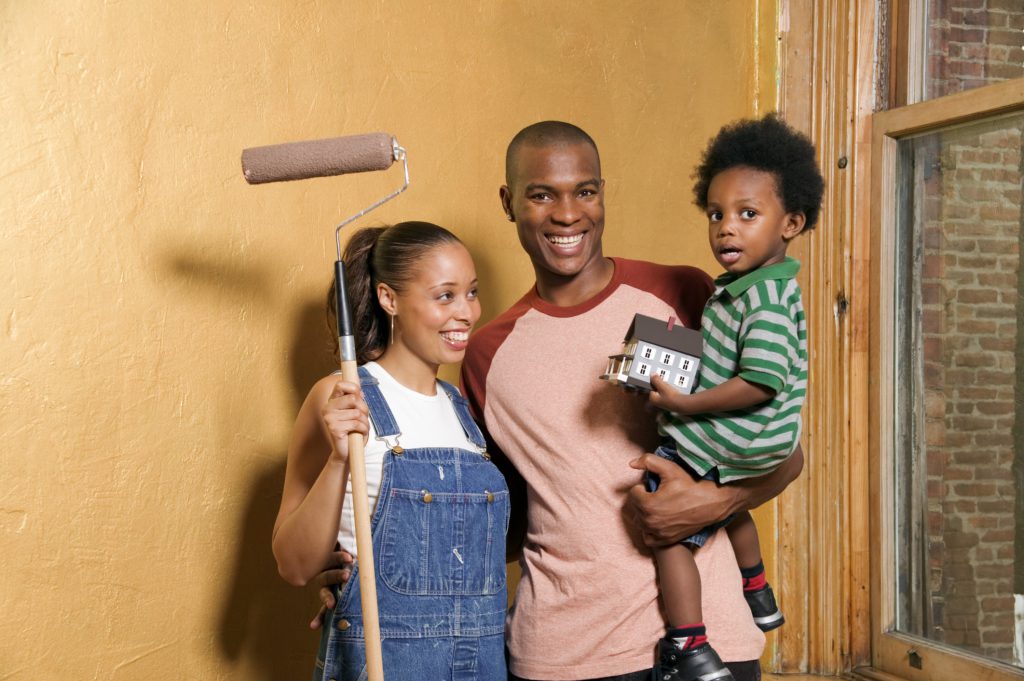The Dangers of Home Renovation or Remodel: Keep Kids Safe During Repairs
1.4.2024 | Heather Cooper
 Dr. Sheela Sathyanarayana says home renovations can expose mold, lead, asbestos and fumes, and families should take precautions to protect pregnant people and children.
Dr. Sheela Sathyanarayana says home renovations can expose mold, lead, asbestos and fumes, and families should take precautions to protect pregnant people and children.Families planning a home renovation or remodel should be aware that the walls they plan to tear down could contain hidden dangers that can hurt unborn babies and children’s growing bodies.
Dr. Sheela Sathyanarayana is a pediatric environmental health specialist at Seattle Children’s Research Institute, and she says that people considering home renovations or remodels, especially in older homes, should take extra precautions if they are pregnant or have children.
“Home renovations can bring out things like dust, mold and fumes that are harmful to children and pregnant people,” Sathyanarayana said. “With a little extra planning, families can keep renovations safe for everyone in the home.”
Older homes can mean mold
Sathyanarayana says that in the Pacific Northwest, one of the main problems a home renovation might uncover is mold.
“Mold can cause respiratory irritation, eye irritation and wheezing, especially in children who have underlying allergies or respiratory issues like asthma,” she said. “If you uncover mold it can end up in the indoor air and cause symptoms. It’s important that mold be cleaned up, and most importantly that the source of moisture be controlled.”
She adds that homeowners can get an air humidity detection meter if they suspect increased moisture or mold in their homes.
In some places, another issue that can impact indoor air is radon, a naturally occurring gas that can seep from the ground into a home and can only be detected with tests. Radon exposure increases the risk of lung cancer.
“Radon is more common in parts of Idaho and Eastern Washington,” she said. “Homeowners can check maps that show radon hotspots and buy kits to test for radon.”
Lead, asbestos and other dangers
 Sathyanarayana says pregnant people and young children should avoid dust and fumes from renovations.
Sathyanarayana says pregnant people and young children should avoid dust and fumes from renovations.Older homes built before 1978 likely contain lead in the interior and exterior paint. Lead exposure and poisoning can have devastating effects on child development. According the Centers for Disease Control, lead affects nearly every system in the body and is especially harmful to the developing brain and nervous system of babies and young children.
“Lead dust and paint chips from older homes are health hazards that children should be kept away from and those who are pregnant should avoid,” Sathyanarayana said. “If you’re hiring a contractor, make sure they satisfy Environmental Protection Agency (EPA)-required guidelines. If you plan to deal with lead material yourself, make sure you read up on how to handle it correctly.”
She says soil can also contain lead and certain vegetables absorb heavy metals more readily. Before you plant a vegetable garden, make sure the soil is tested for lead.
Asbestos is also a material common in older homes and was used in siding, “popcorn” ceilings and old vinyl flooring. Small asbestos fibers get lodged deep in the lungs and increase the risk of lung disease and cancer. Asbestos should be disclosed when you purchase a home, and if you rent, it should be disclosed by your landlord.
Sathyanarayana says that a good way to deal with asbestos is to leave it alone—once the fibers are disturbed, they can disperse all over your home and become extremely hard to control.
“If you plan to remove asbestos, it’s important to hire experts trained in asbestos abatement,” she said. “Asbestos removal requires a special respirator and a contractor with experience.”
Changing a compact fluorescent bulb (CFL), but it falls and breaks? Sathyanarayana says a careful cleanup is important because those bulbs contain mercury and unborn babies and children can be exposed through inhalation.
“The EPA has simple instructions on how to clean up a broken CFL bulb,” she says. “If you’re pregnant, ask someone else to do the cleanup.”
Tips for safe home renovations
Taking a few extra steps before and after a home renovation can protect children and pregnant people. Sathyanarayana offers some simple tips:
Look out for construction in the neighborhood.
Sathyanarayana says that even if the construction isn’t in your own home, work next door or on the street can impact your family. “Be careful what you’re tracking into the home if there’s work nearby,” she says. “Taking shoes off at the front door is a good way to minimize that.”
Pregnant people should take extra precautions.
Sathyanarayana says that a lot of people rush to renovate before a new baby arrives, but pregnant people should take care not to expose a baby to harmful fumes and dust. “If you’re planning to paint, use a brand with low volatile organic compounds (VOCs) and ventilate well,” she said. “Don’t get involved in any renovations that are really dusty.”
Wall off the part of the house you’re working in.
Keep distance between the work and children to minimize exposure to harmful material. “Anywhere there’s going to be a lot of dust, like a demolition, should be sealed off completely,” she said. “Make a good plastic seal between that area and the rest of the home.”
Clean up well when it’s done.
Wipe down residual dust and ventilate an area that’s been renovated. Good ventilation is key to ensure continuous clean air in the home. “You want to make sure kids aren’t inhaling or ingesting harmful dust, especially infants and toddlers that spend a lot of time crawling on the ground.”